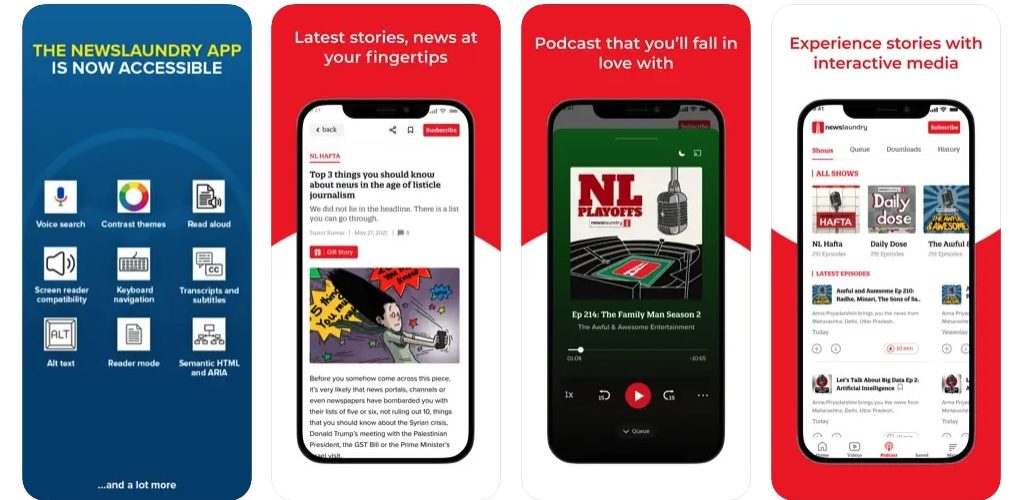
Newsletter
Newsletter
The cyclone strategy focuses on conversion first before engagement. We look at which publishers would benefit by adopting this approach.
28th March 2024

Several media companies took quite a beating last year, and in 2024, but there are still a lot of media companies that are finding ways to grow. INMA analysed the digital subscription growth of 234 news brands around the world and found that the top 25% had an average growth rate of 49%.
In a report with the bullish title of “There Is No Subscription Ceiling for News Media”, INMA looked at what the highest growth news brands had in common. It is worth noting that the study excluded publishers with fewer than 20,000 digital subscribers, and as the data shows, most of these players are large in scale. It reflects a trend the Reuters Institute report describes as “winners take most”, in which a few large new brands capture most of the market.
The report also covers some of the common characteristics of their successful strategies.
The top-performing subscription news brands are turning the funnel on its head using the “cyclone strategy”, which puts conversion ahead of engagement. While this led to a decline in sessions, it increased paywall visibility. For the publishers seeing the highest rate of digital subscription growth, the number of users being stopped by the paywall was 40%. Conversely, paywall visibility dropped by almost the same amount, 37%, for the poorest-performing publishers.
The higher paywall visibility for the fastest growth segment was because they tightened their paywalls, reducing the number of free articles before readers were asked to subscribe. This resulted in a 62% increase in subscription starts for these fastest-growing publishers.
These large, fast-growing publishers are using trial offers to get new subscribers in the door and then focusing on building habits with onboarding, immediate retention efforts and personalised pricing.
Rapidly growing publishers had lower ARPU and slightly higher churn rates — 3.94% versus the 2.4% found amongst the slowest growing cohort. However, despite this, the most successful publishers had higher revenue growth, 46%, compared with the lowest growth segment, which only saw an 18% increase.
Publishers are growing more sophisticated with their retention efforts to ensure that, with this orientation towards acquisition, they don’t end up fighting a losing battle against churn. As the Reuters Institute found last year, apart from the cost of living crisis, the biggest threat to retention was that new subscribers didn’t find value in their subscriptions. To counter this, publishers are using “(e)mail newsletters, a welcome letter from the editor, a mobile app download, podcasts, subscription benefits reminders and/or a series of reminder emails over the first week”, subscription management suite Piano said.
In 2023, the Press Gazette reviewed more than 60 UK and European publishers and found that 86% offered trials, a 26% increase from the year before. Describing the trend as “deeply, briefly and not too cheaply”, the Press Gazette found that trial prices were being reduced to entice more people to sign up, and trial periods were dropping from three years to one, a period which INMA’s Greg Piechota said was a sufficient time to build a habit. However, data from subscription suite provider Piano has shown that year-long trials are preferable to month-long trials because the shorter trial periods offer more opportunities to churn.
INMA recommends that publishers simplify trial pricing but then work to retain new subscribers with individualised pricing or bundles. In a pricing fundamentals webinar, econometrics group Mather found that one-size-fits-all price increases after the trial period led to a higher churn rate and a lower revenue uplift. They highlighted a publisher who raised prices based on churn risk, which included a calculation of how engaged a new subscriber was. High-churn risk customers were not given a price rise, which they said allowed the publisher more time to build habits with them. Medium-risk-of-churn new subscribers might see a $2.99 increase and low-risk subscribers a $4.99 increase. They said a publisher who utilised a “targetted value-based price increase” strategy had increased revenue by 30%.
Artificial intelligence enables publishers to consider a broader range of factors when evaluating price adjustments, said Alicia Queen, the director of consulting services at Mather. However, the factors that most publishers usually consider include:
Just as pricing is becoming more personalised, we believe that subscription strategies also require a level of nuance in their approach. INMA’s research focused on news brands with more than 20,000 digital subscribers. Outside of that sample, other strategies might be more appropriate.
The cyclone strategy works best for large brands that already have large digital audiences, which provide a target-rich environment for acquisition. It won’t work well for media brands with a smaller audience, whether that is a niche culture publisher or a local news publisher. However, trial offers and value-based pricing strategies have proven to work at smaller scales, Mather said.
Another sector that we at Pugpig work with is B2B publishers, and their acquisition and subscription strategies are radically different for several reasons.
We work with our customers to test and refine their onboarding efforts to increase app downloads and to attract and retain subscribers. We have a wealth of experience in audience acquisition and subscription strategies. If you’d like to speak with us, email us or set up a meeting using this calendar link.
Here are some of the most important headlines about the business of news and publishing as well as strategies and tactics in product management, analytics and audience engagement.
A special long Easter weekend edition of long reads and listens.

Newsletter

Newsletter

Newsletter

Newsletter

Newsletter